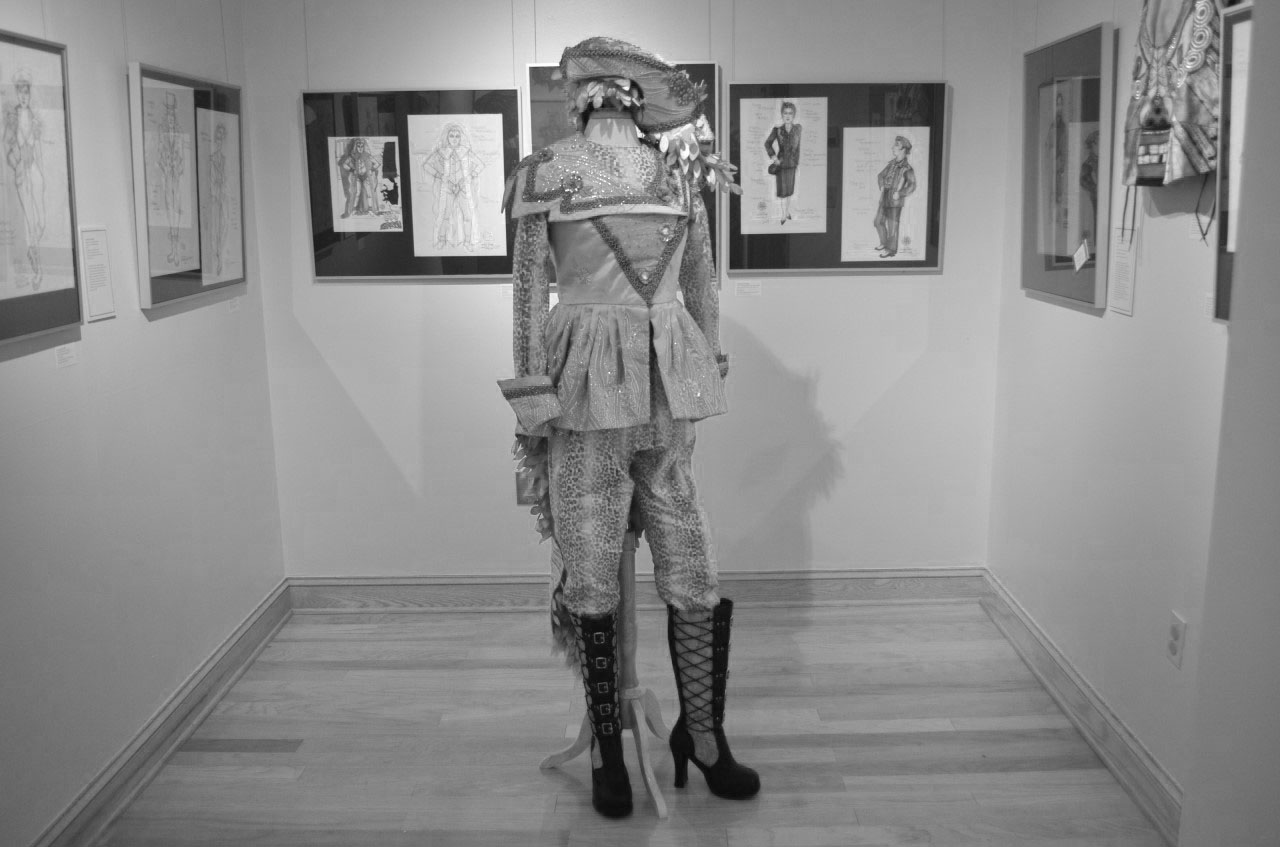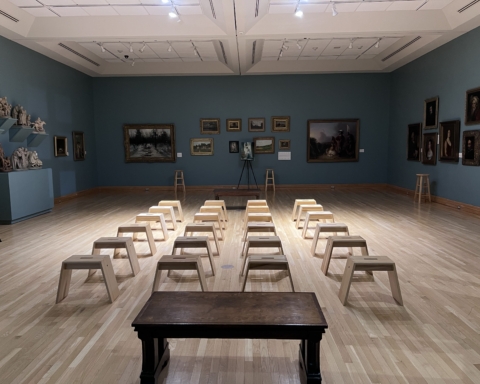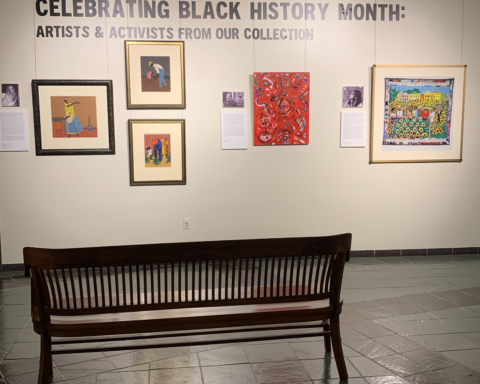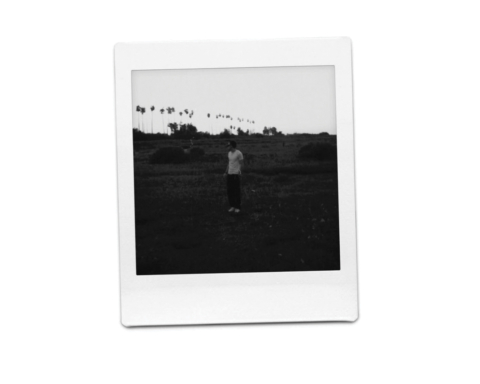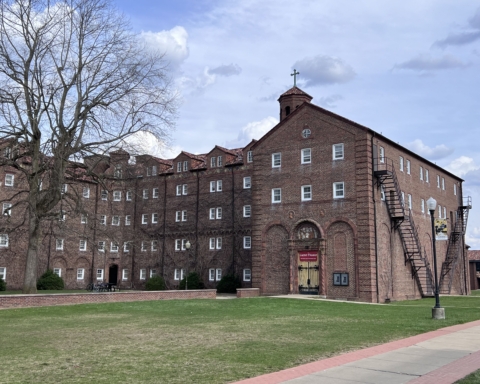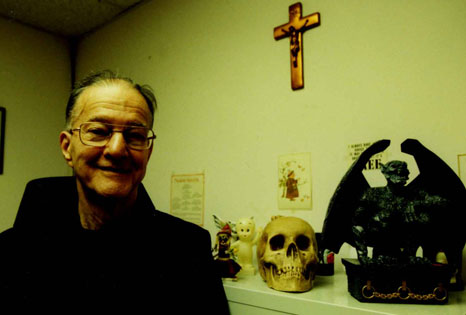By Lauren Zazzara
Associate Editor
What do clowns and operas have in common? Costume designer Howard Tsvi Kaplan has designed for both.
Kaplan’s exhibit in the Regina A. Quick Center for the Arts, titled “Dressing for the Stage: Costumes by Howard Tsvi Kaplan for Theater, Opera, Musicals and the Circus,” shows the process of designing costumes for everything from playful clowns to serious theater.
Kaplan started his career designing costumes for the Ringling Bros. and Barnum & Bailey Clown College. Sean Conklin, assistant curator at the Quick Center, attended Kaplan’s Artist’s Talk on Sept. 15.
“[Kaplan] said a lot of this was self-created fabrics because you didn’t want to go out and buy something someone else could then buy and replicate,” Conklin said. “…Working for Ringling Bros. Clown College really kind of cemented his ability to look at body shapes and forms and mix patterns and colors and all these overlays and really make it work for the person and for the character,” said Conklin.
The section of the exhibit in the lobby of the Quick Center shows his Clown College career. Inside the galleries, visitors can see examples of sketches, fabric swatches and actual costumes used for theater. Conklin said the sketches were included to highlight the working process and to show that even the preparatory pieces for a costume are pieces of art.
“…[It shows] the translation of this is what you’ve sketched out, this is what you’ve envisioned for the person, and then how does that actually translate into three dimensions, into something that’s really wearable but also appropriate for the show, the opera, the play, whatever he’s working in,” Conklin said.
Tabitha Tuttle, a junior at Portville Central School visiting the Quick Center galleries for the first time, appreciated this layout.
“I love the sketches because they’re absolutely amazing, and whoever drew these is really good at it,” Tuttle said.
The pieces generally stay true to sketch, with only minor changes added through the process.
“It is nice to see that you can [see] there’s not a whole lot of change; the transition is there definitely, but he talks about really going out and finding fabrics that work with the actors and actresses but also staying true to the sketch and the vision of the character and of the piece,” Conklin said.
Nidhi Chintalapani, a senior biology major, said she was impressed by the sketch-to-costume transition.
“I think it’s really great how accurate the costumes are to the pictures; I think that’s really cool,” said Chintalapani. “Because usually you’ll see pictures, especially for runway dresses, you’ll see the picture and it looks amazing and the dress doesn’t look the same, but this is actually really accurate.”
Kaplan uses symbolism in his pieces. For example, a costume for Yum-Yum from “The Mikado,” an opera by Arthur Sullivan, includes colors of the sunrise and blossoming flowers to highlight her innocence, whereas the costume for Katisha, the older villain, incorporates spiders and spider webs.
“It’s relating the imagery to the characterization to the physical aspects of the opera and I think that was a cool thing to listen to, that he has to know all the shows as they are, on top of working with different body types and shapes and sizes and personalities, on top of then trying to say, how do I mix fabrics and colors and make something interesting to look at and tell their own story, and how does it complement the rest of the work?” Conklin said.
Conklin discussed how Kaplan starts doing research for the costumes about two years in advance of the production. He has to take into consideration the creative vision of the directors. For example, there are two sets of costumes for “Madama Butterfly” on display in the exhibit. One of the costumes is a traditional kimono, while the other was for a show with a producer from Star Trek.
“They wanted to do almost this kind of a minimal, steampunk post-apocalyptic feel to it,” Conklin said. “…You can see it’s not a traditional kimono…the set was very stark, and you get a lot of these steampunk chains and these minimal draping leathers, so for that [Kaplan] said that was really driven by the producers and the directors; it wasn’t taken just from the story.”
Kaplan is the Visiting Master for 2016-17. He is a friend of the Quick Center’s former director, Joseph A. LoSchiavo, and of the current executive director, Ludwig Brunner. The Quick Center staff visited his home during the summer to collect pieces for the exhibit, and spent most of the summer putting it together, Conklin said.
“It’s a sensory overload visually to see all the fabrics and all the overlays and all the embellishments and things, but I think when you start there it draws you in and then you dissect it work by work or sketch by sketch,” Conklin said. “You see the sketch and then you see the finished costume, and you realize the level it takes to create something like this and think of something like this, so I think that’s really nice.”
Kaplan’s Artist’s Talk is available to view via Periscope, and can be found on the Quick Center’s Facebook and Twitter pages. The exhibit will be on display through Dec. 11.
zazzarlm13@bonaventure.edu

